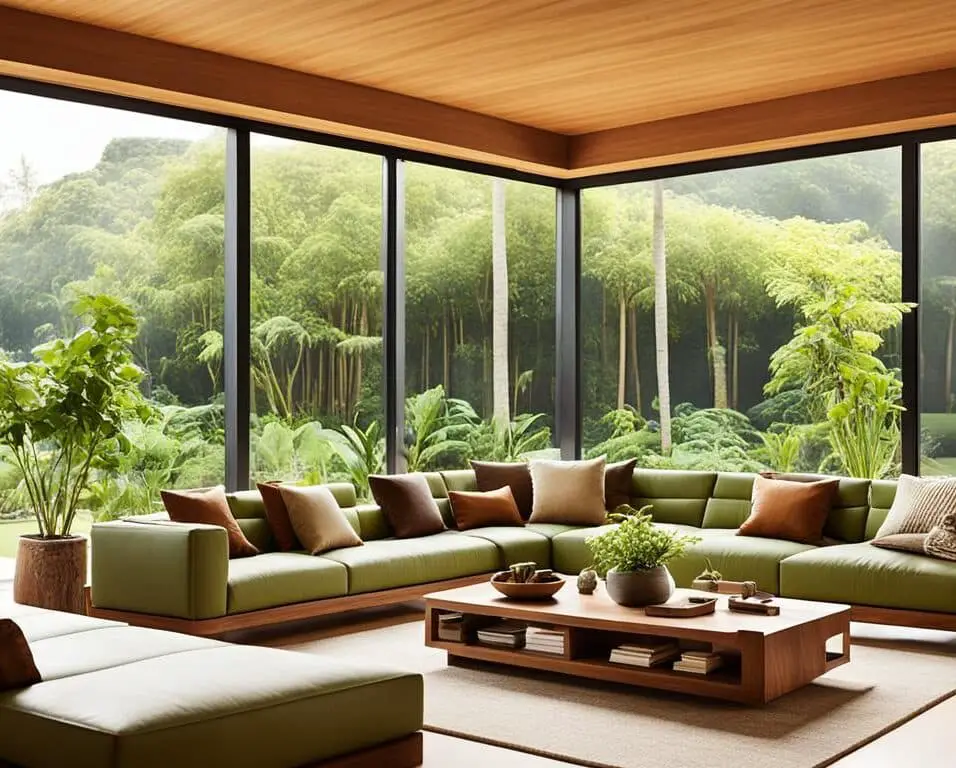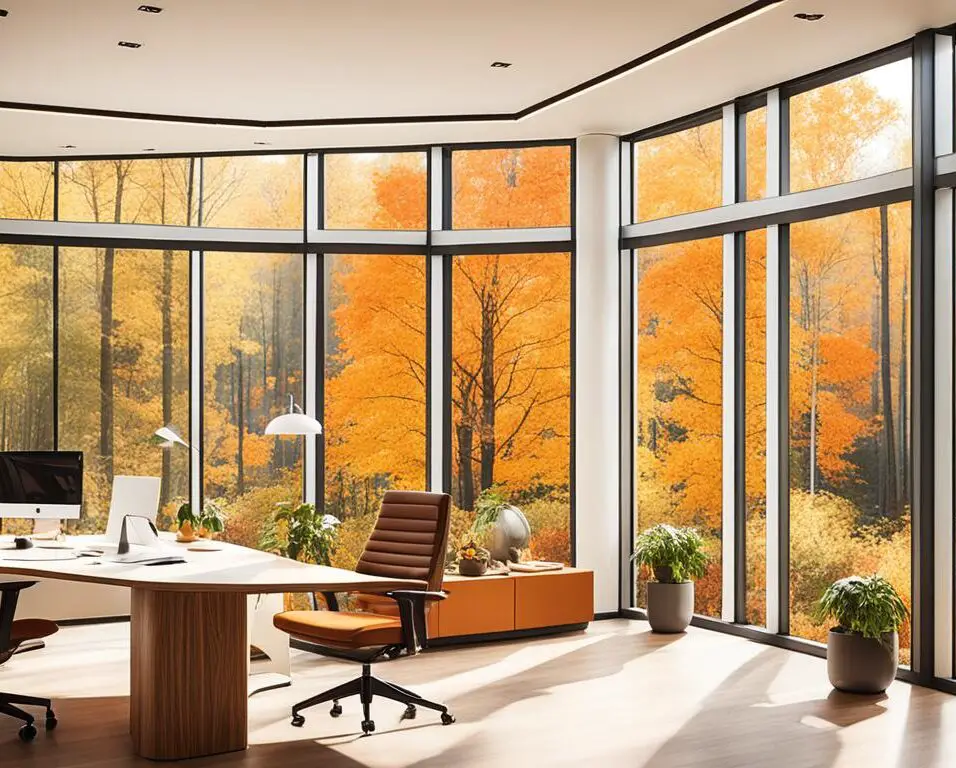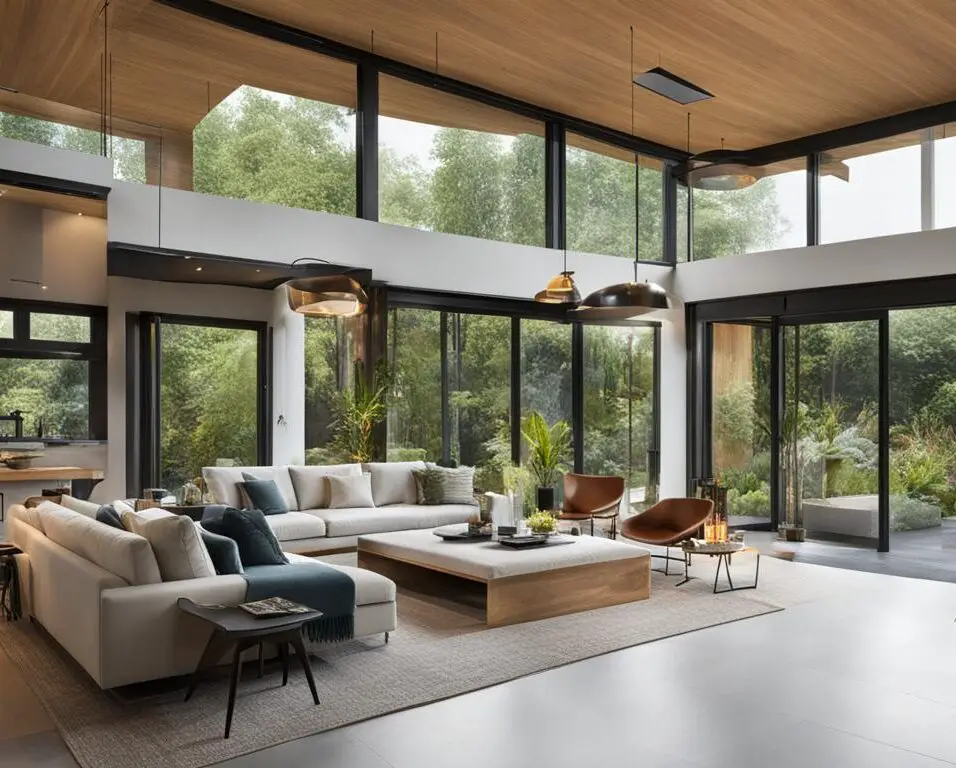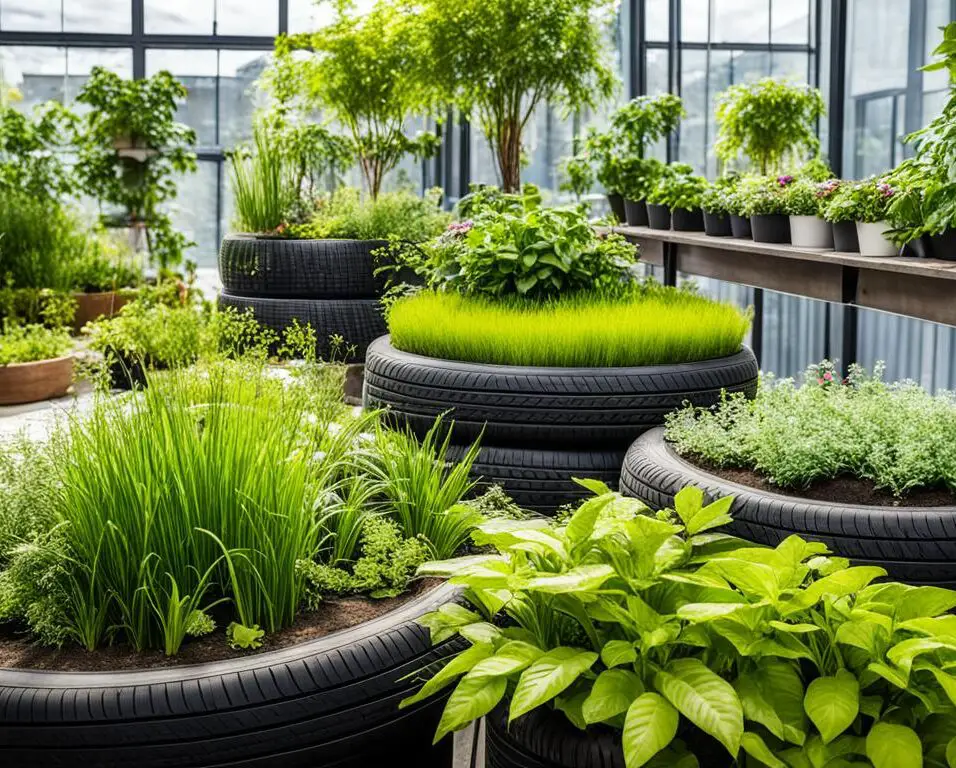Learning Among Nature: Biophilic Design in Educational Institutions
Biophilic design is revolutionizing educational institutions, creating transformative impacts on learning environments. By incorporating natural elements and principles, such as greenery, natural light, and open spaces, biophilic design establishes a deep connection between students and nature. This approach has been scientifically proven to improve student well-being, concentration, and academic performance.
Key Takeaways:
- Biophilic design in educational institutions enhances learning environments.
- Natural elements foster student well-being, concentration, and academic performance.
- Greenery, natural light, and open spaces create a connection between students and nature.
- Implementing biophilic design requires collaboration with architects, designers, and educators.
- Biophilic design promotes sustainability and creates healthier spaces for learning.
The Benefits of Biophilic Design in Educational Institutions
Biophilic design in educational institutions offers numerous benefits. Studies have shown that exposure to nature has a positive impact on student stress levels, cognitive function, and overall well-being. Incorporating elements such as living walls, natural light, and outdoor learning spaces can enhance student engagement, creativity, and concentration. Biophilic design also promotes sustainability by reducing energy consumption and waste in educational institutions. Overall, this design approach creates healthier and more inspiring learning environments for students.
| Benefits of Biophilic Design in Educational Institutions |
|---|
| Reduces student stress levels |
| Improves cognitive function |
| Enhances overall well-being |
| Increases student engagement |
| Boosts creativity |
| Improves concentration |
| Promotes sustainability |
| Reduces energy consumption |
| Minimizes waste |
By incorporating biophilic design principles, educational institutions can create nurturing and inspiring learning environments that positively impact student well-being and academic performance.
Implementing Biophilic Design in Educational Institutions
Implementing biophilic design in educational institutions requires a thoughtful and strategic approach. By integrating natural elements into the design, institutions can create environments that foster student well-being, connection to nature, and enhance the learning experience.
Here are some key considerations for implementing biophilic design:
1. Creating Green Spaces
Creating green spaces within educational institutions provides students with direct access and exposure to nature. This can include outdoor gardens, courtyards, and rooftop green spaces. These areas allow students to engage with nature, offering benefits such as improved mental well-being and cognitive function.
2. Incorporating Natural Materials
Integrating natural materials, such as wood and stone, into the design of educational spaces helps create a sense of connection with the natural world. These materials can be used in flooring, furniture, and wall features to bring a touch of nature indoors.
3. Maximizing Natural Light
Maximizing natural light in educational spaces has numerous benefits for students. It improves mood, increases productivity, and enhances the overall learning experience. Large windows, skylights, and light tubes can be incorporated into the design to bring in ample natural light.
4. Integrating Views of Nature
Integrating views of nature into educational spaces allows students to connect with the outdoors even when indoors. This can be achieved by strategically placing windows and glass walls to provide glimpses of natural landscapes or incorporating nature-inspired artwork depicting natural scenes.
5. Utilizing Indoor Plants
Indoor plants play a significant role in biophilic design by improving air quality, reducing stress, and increasing concentration. Incorporating plants into educational spaces, such as classrooms and study areas, helps create a calming and nurturing environment for students.
6. Adding Water Features
Water features, such as fountains or indoor ponds, can create a soothing and calming atmosphere within educational institutions. The sound and sight of flowing water contribute to a sense of tranquility and connection to nature, promoting student well-being and focus.
7. Embracing Natural Color Schemes
Choosing natural color schemes, inspired by the colors found in nature, can enhance the biophilic design in educational institutions. Earth tones, greens, and blues can help create a harmonious and visually appealing environment conducive to learning.
“Implementing biophilic design in educational institutions offers transformative benefits by creating environments that foster student well-being, connection to nature, and enhance the learning experience.”
Collaboration among architects, designers, and educators is crucial for the successful implementation of biophilic design. By working together, they can ensure that the design aligns with the educational goals and needs of the institution while embracing biophilic principles.
Ultimately, implementing biophilic design in educational institutions brings numerous benefits, from improved student well-being and concentration to a more immersive and inspiring learning experience.
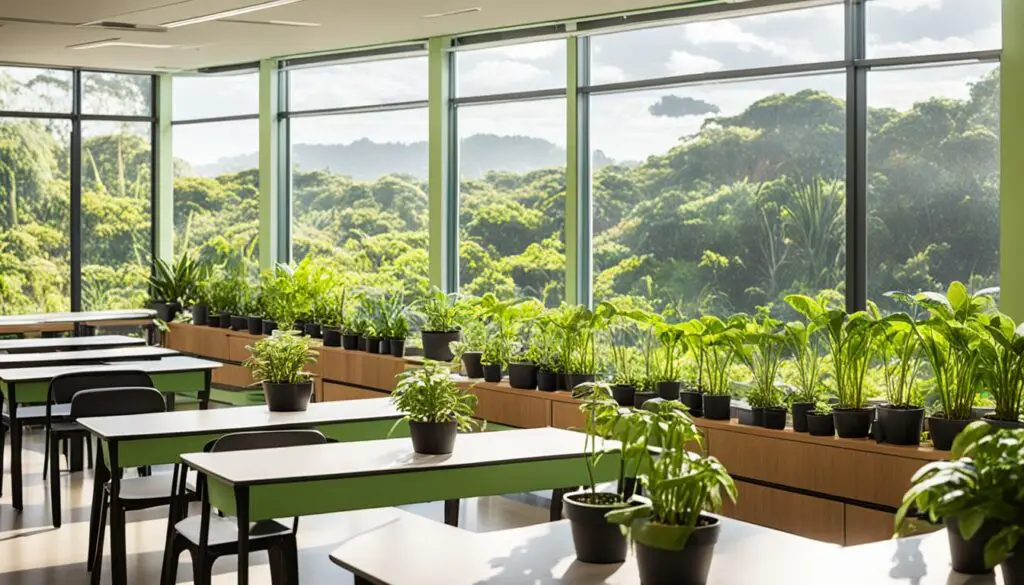
Case Studies: Biophilic Design in Educational Institutions
Several case studies showcase the successful implementation of biophilic design principles in educational institutions. By incorporating elements of nature, these institutions have created vibrant and sustainable spaces for learning. Let’s explore two inspiring examples:
The Bullitt Center, Seattle, Washington
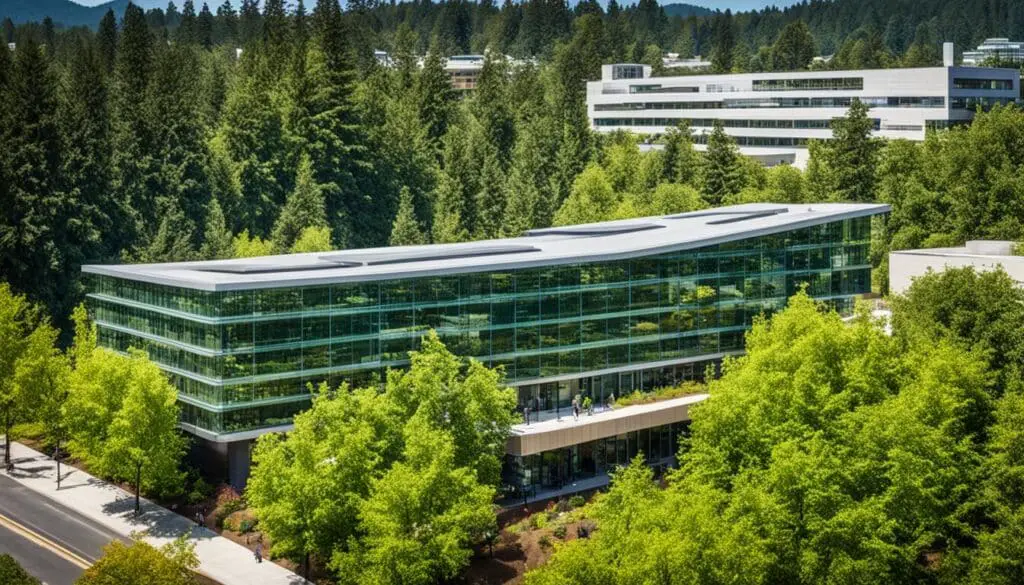
The Bullitt Center in Seattle, Washington, is a remarkable example of biophilic design in action. This sustainable building boasts abundant natural light, a green roof, and gardens that bring nature into the learning environment. The center serves as a living testament to the transformative impact of biophilic design, providing students with a stimulating space that fosters creativity and connection to nature.
Swiss International School, Hong Kong
The Swiss International School in Hong Kong has embraced biophilic design to create an inspiring and nurturing learning environment. The school features extensive green spaces, rooftop gardens, and indoor nature-themed classrooms. These elements not only enhance student well-being but also promote sustainability by providing opportunities for outdoor learning and appreciation of the natural world.
The case studies of the Bullitt Center and the Swiss International School highlight the immense potential of biophilic design in educational institutions. By integrating nature into the built environment, these institutions have created spaces that inspire and support the holistic development of students.
| Case Study | Location | Key Biophilic Design Elements |
|---|---|---|
| Bullitt Center | Seattle, Washington | Abundant natural light, green roof, gardens |
| Swiss International School | Hong Kong | Extensive green spaces, rooftop gardens, nature-themed classrooms |
These case studies demonstrate how biophilic design transforms educational institutions into vibrant and sustainable spaces that prioritize student well-being and connection to nature.
Overcoming Challenges in Implementing Biophilic Design in Educational Institutions
Implementing biophilic design in educational institutions can bring forth numerous benefits. However, it also presents a set of challenges that must be overcome to create truly transformative learning environments. By addressing these challenges head-on, educational institutions can fully embrace biophilic design principles and provide students with nurturing and inspiring spaces.
Availability of Space and Resources
One of the primary challenges in implementing biophilic design is the availability of space and resources. Creating outdoor green spaces and gardens requires adequate land, which may be limited in urban educational settings. Additionally, allocating the necessary resources for landscaping, maintenance, and upkeep can pose financial constraints for institutions with tight budgets.
Budget Constraints and Sustainability
Another challenge lies in incorporating natural materials and sustainable features into the design. While these elements are crucial for biophilic design, they can come with significant upfront costs. Educational institutions must navigate budget constraints and prioritize sustainable practices that align with their financial capabilities.
Resistance to Change and Lack of Familiarity
Resistance to change from stakeholders who are unfamiliar with biophilic design principles can also hinder implementation efforts. Convincing decision-makers, administrators, and educators about the benefits of biophilic design may require education and awareness campaigns. Building understanding and support for this approach is essential to overcome resistance and foster a collaborative environment.
Overcoming these challenges demands collaboration and a commitment to prioritize student well-being and sustainability. By working alongside architects, designers, educators, and other stakeholders, educational institutions can navigate these obstacles and successfully implement biophilic design.
Implementing biophilic design in educational institutions requires thoughtful planning, collaboration, and an investment in creating nurturing and inspiring learning environments. By overcoming the challenges associated with limited space, budget constraints, and resistance to change, educational institutions can provide students with transformative spaces where nature and education intertwine.
The Future of Biophilic Design in Educational Institutions
The future of biophilic design in educational institutions looks promising. As awareness of the benefits grows, more institutions are incorporating biophilic principles into their design and renovation projects. Advancements in technology and sustainable practices will continue to support the implementation of biophilic design, making it more accessible and cost-effective.
Educational institutions will play a critical role in shaping the future of biophilic design, creating environments that foster student well-being, connection to nature, and sustainable practices.
Conclusion
Biophilic design has the power to revolutionize educational institutions and create inspiring learning environments. By integrating natural elements and principles, such as greenery, natural light, and open spaces, educational institutions can significantly enhance student well-being, concentration, and academic performance.
The benefits of biophilic design are well-documented and supported by numerous case studies from schools around the world. These examples showcase successful implementations of biophilic design, demonstrating its transformative impact on student engagement, creativity, and overall well-being.
While implementing biophilic design in educational institutions may present challenges, the future holds promising advancements in technology and sustainable practices. These advancements will make biophilic design more accessible and cost-effective, thereby encouraging wider adoption in educational settings.
As we move forward, embracing biophilic design in educational institutions is key to shaping a sustainable future. By creating nurturing and inspiring spaces for students and connecting them to nature, we not only enhance their educational experience but also instill a sense of environmental stewardship that will benefit future generations.
FAQ
What is biophilic design?
Biophilic design is an approach that incorporates natural elements and principles, such as greenery, natural light, and open spaces, in order to create a connection between students and nature. It aims to improve student well-being, concentration, and academic performance by transforming the learning environment.
What are the benefits of biophilic design in educational institutions?
Biophilic design in educational institutions offers numerous benefits. Studies have shown that exposure to nature reduces student stress levels, enhances cognitive function, and improves overall well-being. It also promotes sustainability by reducing energy consumption and waste. Biophilic design enhances student engagement, creativity, and concentration, creating healthier and more inspiring learning environments.
How can biophilic design be implemented in educational institutions?
Implementing biophilic design involves thoughtful planning and integration of natural elements. This may include creating green spaces, incorporating natural materials, maximizing natural light, and integrating views of nature. Educational institutions can also utilize indoor plants, water features, and natural color schemes to enhance biophilic principles. Collaboration with architects, designers, and educators is essential to ensure that the design supports the educational goals and needs of the institution.
Are there any successful case studies of biophilic design in educational institutions?
Yes, there are several case studies that demonstrate the successful implementation of biophilic design in educational institutions. For example, the Bullitt Center in Seattle, Washington, incorporates biophilic elements such as abundant natural light, a green roof, and gardens. The Swiss International School in Hong Kong features extensive green spaces, rooftop gardens, and indoor nature-themed classrooms. These case studies showcase how biophilic design can transform educational institutions into vibrant and sustainable spaces for learning.
What challenges may be faced in implementing biophilic design in educational institutions?
One challenge is the availability of space and resources to create outdoor green spaces and gardens. Educational institutions may also face budget constraints when incorporating natural materials and sustainable features. Additionally, there may be resistance to change from stakeholders who are unfamiliar with biophilic design principles. Overcoming these challenges requires collaboration, education, and a commitment to prioritize student well-being and sustainability.
What does the future hold for biophilic design in educational institutions?
The future of biophilic design in educational institutions looks promising. As awareness of the benefits grows, more institutions are incorporating biophilic principles into their design and renovation projects. Advancements in technology and sustainable practices will continue to support the implementation of biophilic design, making it more accessible and cost-effective. Educational institutions will play a critical role in shaping the future of biophilic design, creating environments that foster student well-being, connection to nature, and sustainable practices.
Source Links
- https://www.re-thinkingthefuture.com/architectural-community/a11968-architecture-trends-rapid-and-cost-effective-construction-methods/
- https://www.re-thinkingthefuture.com/architectural-community/upcoming-architecture-conferences-2024/
- https://www.brainzmagazine.com/post/6-initiatives-how-hotels-lead-the-way-ascott-philippines-embracing-circular-economy




